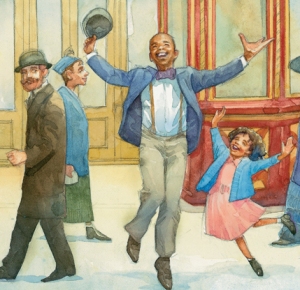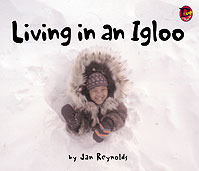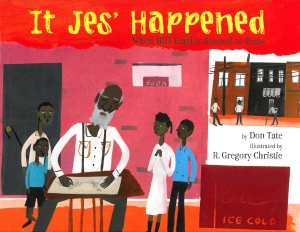 LEE & LOW BOOKS celebrates its 25th anniversary this year and to recognize how far the company has come, we are featuring one title a week to see how it is being used in classrooms today as well, as hear from the authors and illustrators. Continue reading
LEE & LOW BOOKS celebrates its 25th anniversary this year and to recognize how far the company has come, we are featuring one title a week to see how it is being used in classrooms today as well, as hear from the authors and illustrators. Continue reading
Tag Archives: nonfiction
Interview with Jan Reynolds, Who Circumnavigated Mount Everest
 Jan Reynolds is a writer, photographer, and adventurer who has written over fourteen nonfiction books for children about her travels. Her work has appeared in numerous publications including National Geographic, The New York Times, and Outside Magazine. Reynolds is an avid skier, mountain climber, and adventurer who held the record for women’s high altitude skiing, was part of the first expedition to circumnavigate Mount Everest, and performed a solo crossing of the Himalayas.
Jan Reynolds is a writer, photographer, and adventurer who has written over fourteen nonfiction books for children about her travels. Her work has appeared in numerous publications including National Geographic, The New York Times, and Outside Magazine. Reynolds is an avid skier, mountain climber, and adventurer who held the record for women’s high altitude skiing, was part of the first expedition to circumnavigate Mount Everest, and performed a solo crossing of the Himalayas.
You are a world-class adventurer and athlete in addition to being a children’s author. Were you always a writer, or were you inspired to begin writing by your travels?
I’ve always been a writer…. I had a short story, fiction, that was published when I was in high school. I’m working on a young adult fiction book right now!
What was your hardest trip or exploration? Was there ever a moment in your travels when you wanted to turn back? What inspired you to keep going?
When I was crossing the Himalaya solo, I almost turned back, I was so sick (I talk about this in my documentary video, “Cultural Adventure with Jan Reynolds”). I lived in my tent alone for about four days and nights, and was found by a Sherpa and his son who nursed me back to health, and I finished my journey going from Nepal into Tibet over the Himalaya following the salt trade. I kept going because I needed to complete my trade on this salt trade route. I was working for National Geographic magazine, and I wanted to get my story!!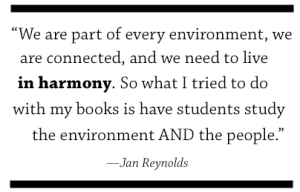
Happy Earth Day from Lee & Low Books!
In an era of great global change, it’s more important than ever to take a moment today to think about how the Earth sustains us and how we can help to sustain it in return.
We asked author Jan Reynolds, whose work we have been showcasing throughout April here on the blog and whose travels have taken her from a hot air balloon over Mount Everest to the Sahara Desert, to share a few of her favorite photos and some thoughts on celebrating Earth Day:
I chose photos for Earth Day that aren’t big landscapes on purpose. We think of Earth Day as the Earth, pristine, something separate, while in reality…
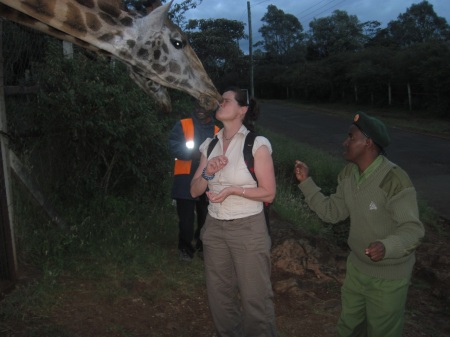 …the Earth is one big party with all kids of life on it, not just plant life and oceans.
…the Earth is one big party with all kids of life on it, not just plant life and oceans.
Raising Global Citizens: Jan Reynolds Author Study
Today’s world is smaller than ever, and as technology continues to advance it will only get smaller. Raising students for success means teaching them how to be global citizens, emphasizing cultural literacy and geoliteracy, and exposing them to people whose lives differ from theirs.
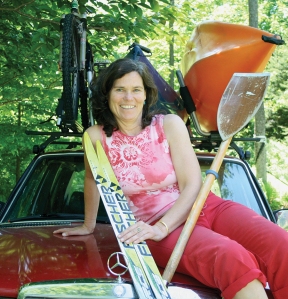
For this, there’s no better author than Jan Reynolds. Reynolds is a writer, photographer, and adventurer who has written over fourteen nonfiction books for children about her travels. Her work has appeared in numerous publications including National Geographic, The New York Times, and Outside Magazine. Reynolds is an avid skier, mountain climber, and adventurer who holds the record for women’s high altitude skiing, was part of the first expedition to circumnavigate Mount Everest, and performed a solo crossing of the Himalayas.
Throughout April, we’ll be exploring how Jan’s books can be used in the classroom to teach about the environment, geoliteracy, global citizenship, and nonfiction. Today, we wanted to share Jan’s books and some of our favorite resources available to help teach them:

Jan’s Books:
Vanishing Cultures: Sahara (North Africa)
Vanishing Cultures: Mongolia (Mongolia)
How to Compare and Contrast with the Common Core in Fourth Grade
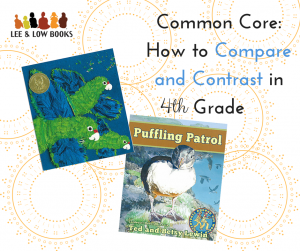 Fourth grade is a significant juncture for readers because the Common Core State Standards prescribes that 50% of reading material should be nonfiction. One of the critical skills on Common Core-aligned end of year assessments is compare and contrast. By the end of the fourth grade, students need experience in comparison for both fiction and nonfiction works. Practice in comparison not only improves a student’s close reading abilities, but also enables educators to gauge student comprehension and interpretation.
Fourth grade is a significant juncture for readers because the Common Core State Standards prescribes that 50% of reading material should be nonfiction. One of the critical skills on Common Core-aligned end of year assessments is compare and contrast. By the end of the fourth grade, students need experience in comparison for both fiction and nonfiction works. Practice in comparison not only improves a student’s close reading abilities, but also enables educators to gauge student comprehension and interpretation.
In honor of Parrots Over Puerto Rico winning the 2014 Robert F. Siebert Medal for the most distinguished informational book for children published in 2013, I am comparing Parrots Over Puerto Rico with Puffling Patrol. This book comparison is useful because the books tackle similar central ideas, yet have very different text structures and presentations of information.
I have created sample questions to teach towards and check mastery of each of the three Common Core categories. These are by no means the only questions to ask in each category, but these provide an overview of the progression in question complexity and mastery of the texts.
By creating a range of compare and contrast questions across the standards, we are able to differentiate for students within a class, provide extension opportunities for ready learners, or move the whole class from literal- to higher-level thinking over the course of several lessons.
Texts:
Parrots Over Puerto Rico (level: Q)

Puffling Patrol (level: R)
Unpacking the Common Core Standards Horizontally: Informational Text
 Jaclyn DeForge, our Resident Literacy Expert, began her career teaching first and second grade in the South Bronx, and went on to become a literacy coach and earn her Masters of Science in Teaching. In her column she offers teaching and literacy tips for educators.
Jaclyn DeForge, our Resident Literacy Expert, began her career teaching first and second grade in the South Bronx, and went on to become a literacy coach and earn her Masters of Science in Teaching. In her column she offers teaching and literacy tips for educators.
Over the past few weeks, I’ve been talking about the importance of looking at the standards horizontally as well as vertically, and in this final installment in the series, I’m going to do just that as I walk you through what effective close reading questioning can look like, unpacking one strand at a time using texts of varying complexities. Last up:
READING STANDARDS FOR INFORMATIONAL TEXT K-3, Craft and Structure, Strand 5
In Kindergarten, the strand reads: Identify the front cover, back cover, and title page of a book.
Example text: Living in an Igloo by Jan Reynolds
genre: informational text
Strand-specific questions:
- Point to the front cover of the book. What information can you find on the front cover of the book? Why is that information important?
Black History Month: Why Remember Bill Traylor?
![]() Everyone knows Frederick Douglass and Martin Luther King, Jr., but there are many other African Americans who have contributed to the rich fabric of our country but whose names have fallen through the cracks of history.
Everyone knows Frederick Douglass and Martin Luther King, Jr., but there are many other African Americans who have contributed to the rich fabric of our country but whose names have fallen through the cracks of history.
We’ve asked some of our authors who chose to write biographies of these talented leaders why we should remember them. We’ll feature their answers throughout Black History Month.
Today, Don Tate shares why he wrote about Bill Traylor in It Jes’ Happened: When Bill Traylor Started to Draw:
Writing a Life: How to Write a Biography for Children
![]()
![]() In this guest post we welcome Alan Schroeder, author of In Her Hands: The Story of Sculptor Augusta Savage and Baby Flo: Florence Mills Lights Up the Stage to discuss what it takes to write a biography for children.
In this guest post we welcome Alan Schroeder, author of In Her Hands: The Story of Sculptor Augusta Savage and Baby Flo: Florence Mills Lights Up the Stage to discuss what it takes to write a biography for children.
Writing someone’s biography can be a tricky business. First—and this is important—you’ve got to be enthusiastic about the person you’re writing about. Otherwise, it won’t work. Readers will know that on some level you’re not engaged and they won’t enjoy reading the book any more than you enjoyed writing it. I was asked once to write a biography of the Three Stooges. I said no, because I’ve never found their humor to be funny. Sure, I could get the facts right, but that’s not enough. You have to have passion.
